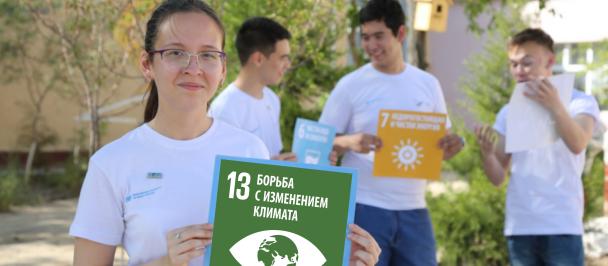United Nations Statement to the International Monetary and Financial Committee (IMFC) of the Board of Governors
October 13, 2022
“A cost-of-living crisis is raging. Trust is crumbling. Inequalities are exploding. Our planet is burning. People are hurting… We have a duty to act. And yet we are gridlocked in colossal global dysfunction”
UN Secretary General, Antonio Guterres
At the end of 2021, we took stock of a difficult year affected by the COVID-19 Delta variant, a slowing economic recovery, supply chain constraints and a rise in energy and food prices and inflationary pressures. We observed that these developments were driving a dangerous divergence in the global economy leaving the most vulnerable countries behind, and that downside risks were exceptionally high.
Today, many of these risks have materialized --amplified by the war in Ukraine—including disruptions to global energy supply, rising geopolitical tensions and high inflation. As countries undertake synchronized monetary and fiscal tightening to try and curb inflation, and/or manage financial volatility, fears of a global recession are growing.
The consequences of rising interest rates and a change in global economic sentiment are especially hard felt in developing economies where the financial and economic worsening this year come on top of an already unfolding debt crisis. A debt crisis that now threatens to spill over to an entrenched sustainable development crisis where countries now face even bleaker prospects of funding the investments needed to make progress on the Sustainable Development Goals (SDGs) – including crucial spending and investments needed to mitigate the poverty impacts from high energy and food prices and deal with an intensifying climate crisis.
Wealthy countries have enough resources and tools available to help alleviate a development crisis while managing their own difficult economic situations. In fact, not doing so would only increase the chances of a global recession and financial crisis and delay the urgently needed global climate transition.
At the UN General Assembly, Secretary General Antonio Guterres issued an urgent call to G20 economies to endorse a global SDG Stimulus Plan to massively boost investment in sustainable development. The Plan includes the following action points.
Action 1: Provide Liquidity to Support Recovery Efforts in the Near-Term
A global economic recovery involves providing liquidity to struggling developing economies and injecting a large SDG stimulus to kickstart recovery and sustainable investments at scale. To date, the response of the G20, alongside International Financial Institutions and other key stakeholders, have played an important role in creating fiscal space, including through the Debt Service Suspension Initiative (DSSI) and the historic issuance of $650 billion worth of Special Drawing Rights (SDRs). However, many of these solutions have not reached their full potential, or, in the case of the DSSI, have not been renewed beyond the first phase of the COVID-19 pandemic, despite the clear need for continued relief.
Liquidity has dried up in both short-term and long-term sovereign debt markets. The IMFC needs to help deliver multilateral solutions to multilateral problems. The IMF and major central banks should be encouraged to substantially expand liquidity facilities and central bank currency lines and accelerate the re-channeling of all unused Special Drawing Rights (SDRs) to countries in need, including through the Resilience and Sustainability Trust (RST) and Multilateral Development Banks (MDBs). If needed, the IMF should prepare for a new allocation of SDRs, ideally targeting vulnerable economies that need financial resource the most.
Action 2: Enhance debt relief for vulnerable countries
About 60% of low-income countries and close to 30 percent of emerging market economies are in or near debt-distress and running out of fiscal space.
To supplement new sources of liquidity support and help avoid a developing economy financial crisis, the adoption of a new enhanced Debt Service Suspension Initiative (DSSI-E) is needed. The objectives of a DSSI-E should be to free up resources by suspending debt service payments falling due between 2023-2025 including automatically (with the possibility to “opt-out”) recapitalizing maturing debt into medium term loans, and by deploying various debt reduction operations such as Debt-for-SDG swaps especially important for countries with solvency problems. A DSSI-E should apply to all bilateral official creditors while urging other creditors to join in, and all vulnerable developing economies should be eligible.
Debt relief will have to go beyond additional liquidity support and debt rescheduling to involve comprehensive restructuring for countries dealing with unsustainable debt. The Common Framework for Debt Treatments (CF), introduced in response to the Covid-19 pandemic, is an attempt to apply practices and approaches of the Paris Club onto the G20. But it has so far not proven effective and will have to change. Only three countries - Chad, Ethiopia, and Zambia - have signed up for debt treatments under the CF and still no country has concluded a restructuring after more than 18 months of initializing the process.
Action 3: Better leverage lending from Multilateral Development Banks (MDBs) and Public Development Banks (PDBs)
Developing countries, particularly Least Developed Countries and Small Island Developing States, face too many obstacles in accessing the finance they need to invest in their people and their future.
Multilateral Development Banks (MDBs) – the World Bank and regional counterparts – and other Public Development Banks (PDBs) must increase long-term funding to developing countries linked to investments in the recovery and SDGs. MDBs themselves need more finance, to expand their borrowing capacity, so they can assist all countries in need. An SDG Stimulus Plan of around $500 billion per year by 2025 could be achieved by implementing the recommendations of the G20 Capital Adequacy Framework Panel Report, in combination with a boost of annual paid-in capital to MDBs. PDBs could also leverage their portfolios to finance high-quality growth-oriented investments in human capital and resilient infrastructure. New concessional lending should prioritize attaining the SDGs including climate resilience and sustainability in climate-vulnerable countries.
Action 4: Align financial flows with the SDGs and Paris Agreement, according to country-level priorities and needs
All official creditors—including bilateral donors, the IMF, MDBs, and others—need to coordinate their actions as part of country-led and country-owned Integrated National Financing Frameworks (INFFs) that are aligned with the SDGs and Paris Agreement. These efforts should also ensure that all financial flows are invested in long-term sustainable development and resilience, that populations are prepared for future crises, and can benefit from impending technological, demographic, and climate-related transitions.
The global financial system already has all the resources needed to implement a massive SDG Stimulus Plan, and to support an immediate recovery while laying the groundwork for a reformed international financial system that can fully align with and support the acceleration and realization of the 2030 Agenda. What is needed is political will and a developing and repurposing of existing tools at our disposal. We must act now, before it is too late, before the global economy tips into a recession, before the world becomes more fragmented, and our common future unsustainable.

 Locations
Locations

